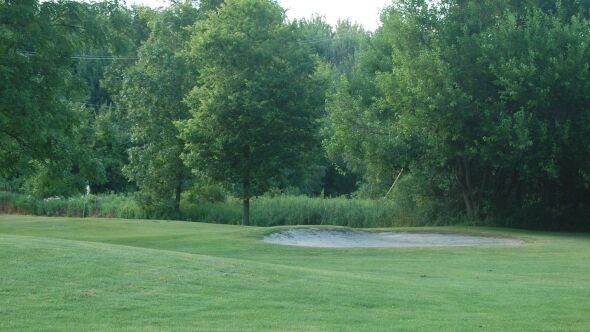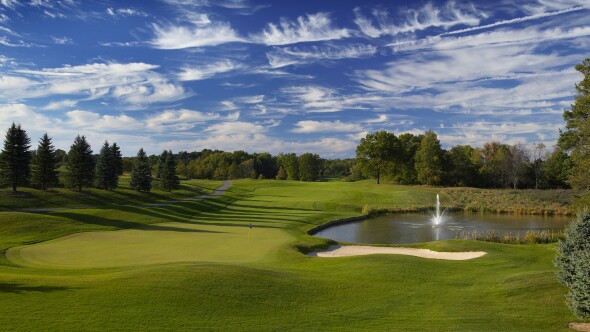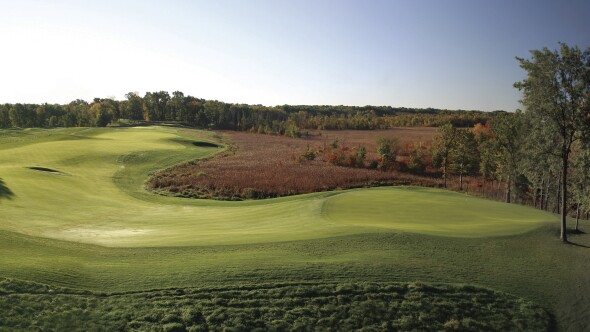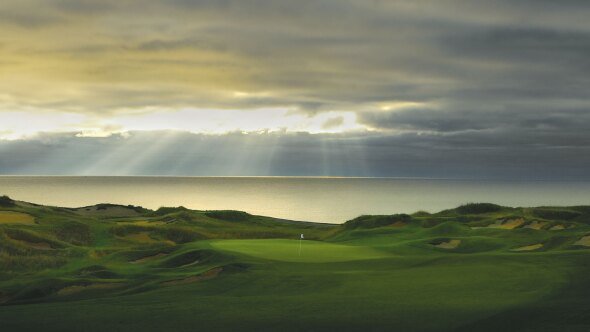Red/White at Eldorado Golf Course

About
Holes 18
Type Public
Par 71
Length 6415 yards
Slope 112
Rating 70.2
| Tee | Par | Length | Rating | Slope |
|---|---|---|---|---|
| Blue | 71 | 6415 yards | 70.2 | 112 |
| White | 71 | 6052 yards | 68.6 | 111 |
| Red | 71 | 5404 yards | 70.0 | 116 |
Scorecard for Red/White
Metrics:
| Hole | 1 | 2 | 3 | 4 | 5 | 6 | 7 | 8 | 9 | Out | 10 | 11 | 12 | 13 | 14 | 15 | 16 | 17 | 18 | In | Total |
|---|---|---|---|---|---|---|---|---|---|---|---|---|---|---|---|---|---|---|---|---|---|
| Blue M: 70.8/124 | 410 | 375 | 228 | 365 | 380 | 317 | 160 | 563 | 505 | 3303 | 404 | 340 | 305 | 150 | 333 | 170 | 428 | 428 | 554 | 3112 | 6415 |
| White M: 69.2/121 W: 75.1/129 | 405 | 360 | 170 | 355 | 368 | 301 | 157 | 557 | 487 | 3160 | 381 | 321 | 291 | 133 | 316 | 151 | 391 | 371 | 537 | 2892 | 6052 |
| Red M: 64.8/112 W: 69.4/118 | 365 | 265 | 130 | 272 | 350 | 280 | 130 | 470 | 445 | 2707 | 374 | 305 | 277 | 132 | 312 | 132 | 371 | 346 | 448 | 2697 | 5404 |
| Handicap | 3 | 15 | 11 | 9 | 7 | 17 | 13 | 1 | 5 | 8 | 10 | 14 | 18 | 12 | 16 | 2 | 6 | 4 | |||
| Par | 4 | 4 | 3 | 4 | 4 | 4 | 3 | 5 | 5 | 36 | 4 | 4 | 4 | 3 | 4 | 3 | 4 | 4 | 5 | 35 | 71 |
Course Details
Year Built 1964
Fairways Blue Grass
Greens Bent Grass
Golf Season Open: 3/01 Closed: 11/01
Architect Jerry Matthews (1996)
Rentals/Services
Carts Yes
Clubs Yes
Practice/Instruction
Driving Range Yes
Bunker Yes
Teaching Pro Yes
Pitching/Chipping Area Yes
Putting Green Yes
Policies
Credit Cards Accepted VISA, MasterCard, Discover Welcomed
Metal Spikes Allowed No
Walking Allowed Yes
Available Facilities
Lounge, Meeting Facilities, Banquet Facilities
The Best Way To Book Is With GolfPass+
10 rounds of waived fees
$120 in tee time credits
Tee Time Protection
Redeem GolfPass points
Reviews
4.0
I Recommend This Course
Beautiful but yet....
Beautiful but yet covered in divots! Some of the woman’s tee boxes were in terrible condition. The layout is nice, wide fairways, fast greens.
Conditions Average
Value Good
Layout Excellent
Friendliness Excellent
Pace Good
Amenities Excellent
I Recommend This Course
Great place for an outing
I played this course in a 4 person scramble. The course was wet in spots, but that's no different than any other course in the area due to the recent rain. I really liked the layout. The fairways and greens looked great. I'll definitely come back and play this course again.
Conditions Average
Value Average
Layout Good
Friendliness Excellent
Pace Average
I Recommend This Course
Early League Play
Considering the recent weather the course was in pretty good shape. Greens faster then expected.
Conditions Good
Value Good
Layout Good
Friendliness Good
Pace Good
Amenities Good
Business Tools for Golf Course Operators
Nearby Courses
Golf Packages
Best of Battle Creek Package
FROM $147 (USD)
GRAND RAPIDS/KALAMAZOO | Enjoy 3 nights’ accommodations at FireKeepers Casino Hotel and 3 rounds of golf at The Medalist Golf Club, Riverside Golf Club, and Binder Park Golf Course.
SW Michigan Golf Around Package
FROM $127 (USD)
GRAND RAPIDS/KALAMAZOO | Enjoy 3 nights’ accommodations at Quality Inn – Battle Creek and 3 rounds of golf at The Medalist Golf Club, Angel’s Crossing Golf Club, and The Grande Golf Club.
The Loon Golf Resort Stay & Play Package
FROM $167 (USD)
GAYLORD | Enjoy up to 3 nights' accommodations at The Loon Resort’s Lodges at The Ridge and up to 4 rounds of golf at The Loon Golf Resort - Lakes, Loon, & Ridge Courses.
Destination Kohler - To Dye Four Golf Package
FROM $557 (USD)
KOHLER, WI | Enjoy 3 nights’ accommodations at The American Club or the Inn on Woodlake and 4 rounds of golf at Blackwolf Run (River & Meadow Valley Courses) and Whistling Straits (Straits & Irish Courses).
SentryWorld Stay & Play Package
FROM $347 (USD)
STEVENS POINT, WI | Enjoy 3 nights’ accommodations at The Inn at SentryWorld and 2 rounds of golf at SentryWorld Golf Course (site of the 2023 U.S. Senior Open).
Course Layout








 Back
Back





















